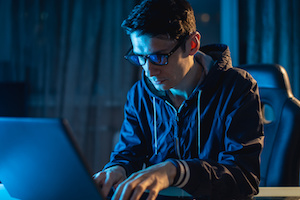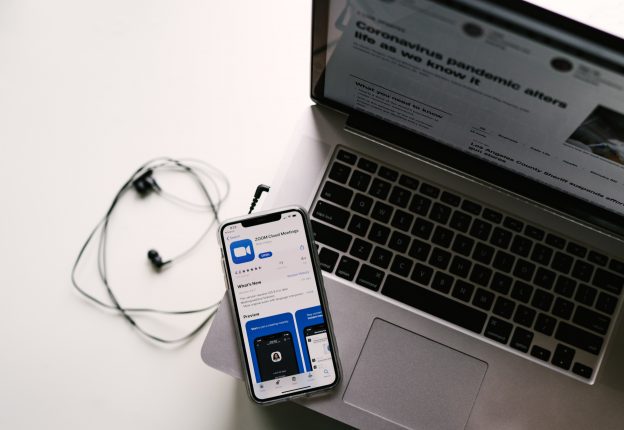During the pandemic, many things that can be done remotely are in fact being done remotely: those whose jobs allow it are working at home; we interact with our friends and family online; and motion hearings are often being done remotely. Expert witness depositions are also being taken remotely.. There are a number of upsides to this, beyond decreasing potential exposure to the Covid-19 virus: for example, saving the time and travel costs associated with bringing an expert to an in-person deposition or opening up the universe of potential experts by increasing the ability to tap others who are less local.
But there are also challenges associated with online depositions. Some are for the attorney, not the expert, such as coordinating with the court reporter to make sure everything will be properly recorded. For the expert, there are plenty of things the expert should do to prepare for the deposition.
Technical & General Preparation
First, the expert should find out what software will be used for the deposition, make sure it’s downloaded ahead of time, and test the system— including the computer’s camera, microphone, and speakers — well in advance. Frantically trying to download and install the software when its “go” time does not engender confidence in your client or his or her attorney — and will not make the other side take you seriously.
Second, the expert should double check what will be in his or her background during the deposition and “stage” the setting appropriately. It may be helpful to have diplomas, technical certifications or licenses, treatises, and perhaps some tasteful and unobjectionable artwork as background. Don’t have children’s artwork, stuffed animals, the trashy novels the expert reads during his or her downtime, or anything controversial or political in view. The background framing the expert should look as professional as would the inside of the law firm conference room where in-person depositions are typically taken.
Related to this: the attorney taking the deposition may — and can — ask the expert to pan the camera around the room to make sure there is no one there feeding the expert cues or responses. Make sure the entire room is a suitable backdrop for a deposition.
Third: dress to impress. Yes, we all know that Zoom conference dress codes are generally laxer than in-person dress codes … but a deposition is the exception that proves the rule. Treat it as what it effectively is: a remote court hearing. After all, the video may be played in court — the expert should not wear anything he or she would not want a judge or jury to see him or her in. And yes — that includes work pants (or skirt) and work shoes: the expert should not assume that it’s enough to wear a dress shirt and blazer, since at some point, he or she may stand up or back-up or otherwise bring what’s below the waist into view.
Coffee or water — leaving the field of view of an online deposition presents issues that getting up from your chair in an in-person deposition does not. For example: did you get up so you could call, text, or email someone off camera, to get guidance as to how to answer? It is better to minimize, to the greatest degree possible, having to get up and break the online deposition. You can’t control bathroom breaks, but you can minimize breaks for water, coffee, or granola/energy bars: lay the refreshments out ahead of time, if you can.
Logistical Preparation — Exhibits
It’s always best practice for the expert, the attorney for the expert’s client, opposing counsel, and the court reporters to always have their own pre-marked set of exhibits. (Always pre-mark exhibits: it saves time and cuts down on confusion.) But in an in-person deposition, a failure to do so is of less moment: the parties can share exhibits on the spot, then provide extra copies later, as needed. However, that’s clearly not an option during a remote deposition, where you might have people in four, five, or more locations (e.g. the expert, the attorneys on each side, any litigants attending the deposition, and the court reporter may all be appearing from their own homes or offices); everyone needs to have their own copy in advance.
The real responsibility for marking and forwarding exhibits this rests principally on the attorney taking the deposition, but the expert should at least contact the attorney representing his or her client to make sure that copies of any exhibits are forwarded to him or her … after all, everyone is working outside their comfort zone during the pandemic and things drop in the cracks, so to speak. By checking to make sure that he or she has copies in advance of anything he or she will be questioned about, the expert can help make sure the deposition is fruitful and not a waste of anyone’s time — and if the proper exhibits are not provided to the expert, at least he or she can truthfully say that they tried and therefore are not responsible for any lapses.
Similarly, if there are materials that the expert is asked to bring, such as any treatises that he or she relied upon in coming to an expert opinion, the expert should either copy and provide shorter materials (they can be provided to the attorney representing the expert’s client, who then will circulate them) or at least provide — well in advance — the citations for any longer works, so that anyone who wants to have a copy during the deposition has the chance to obtain them.
And then there are demonstrative exhibits which are things which are not evidence in and of themselves, but illustrate key evidentiary points. They are the equivalent of the graphics the nightly news puts up to illustrate important statistics or developments. These always have had to be created in advance … but now the expert may need to create them differently. What looks good in person may NOT look good when viewed on your MacBook Air’s camera. Test the demonstrative exhibits on the video conferencing platform you are using in advance and make sure they work.
Testimonial Preparation
Experts should always review their testimony in advance with the attorney representing their client. Yes, they can’t “script it,” and the expert (and attorney) have a legal and ethical obligation to assure that all testimony is truthful … but all that said, the lawyer and expert should go over in advance what issues the opposition is expected to ask about and some “basics” about testifying — e.g. to pause a moment before answering, in case the lawyer wants to object; to not extrapolate, but only answer the question that is asked; to not be afraid to ask for clarification of an unclear question; etc.
But bear in mind that a Zoom (or the equivalent) deposition will present challenges an in-person deposition does not, such as the possibility of the deposition “freezing” at an inopportune moment or losing connection momentarily. Discuss with the lawyer representing the expert’s client how to deal with those eventualities — does the expert ask for the question to be restated after the interference or break? Does the expert leave a longer-than-normal pause before answering, to make sure the lawyer has time to object? And so forth. Assume there will be connectivity issues at inopportune moments and plan for them, so that the expert and his/her client’s attorney are reading (so to speak) from the same playbook. Do not assume that the lawyer representing your client will always be able to object in real time to problematic questions.
During the Deposition
We’ve alluded to this above, but experience teaches us that Zoom, Microsoft Go To Meeting, and similar software will have problems in practice: internet connections stutter or drop out, there are buffering issues, etc. During all depositions, the deponent — including an expert witness — should not hesitate to ask the examining attorney to restate or repeat a question. But this goes doubly for remote depositions, due to software and connectivity issues. When in doubt, the expert should ask opposing counsel to restate or rephrase his or her question.
In Conclusion
Compare a Zoom call with a friend or family member with talking with that individual face-to-face. You may find it more challenging and less rewarding. There may be parts of the conversation which were not clear or garbled. That’s for an informal, “no stakes” call. Now imagine what it might be like for a formal, high stakes call, such as you will find in a remote deposition. Plan for the inevitable Zoom-related issues in advance.







